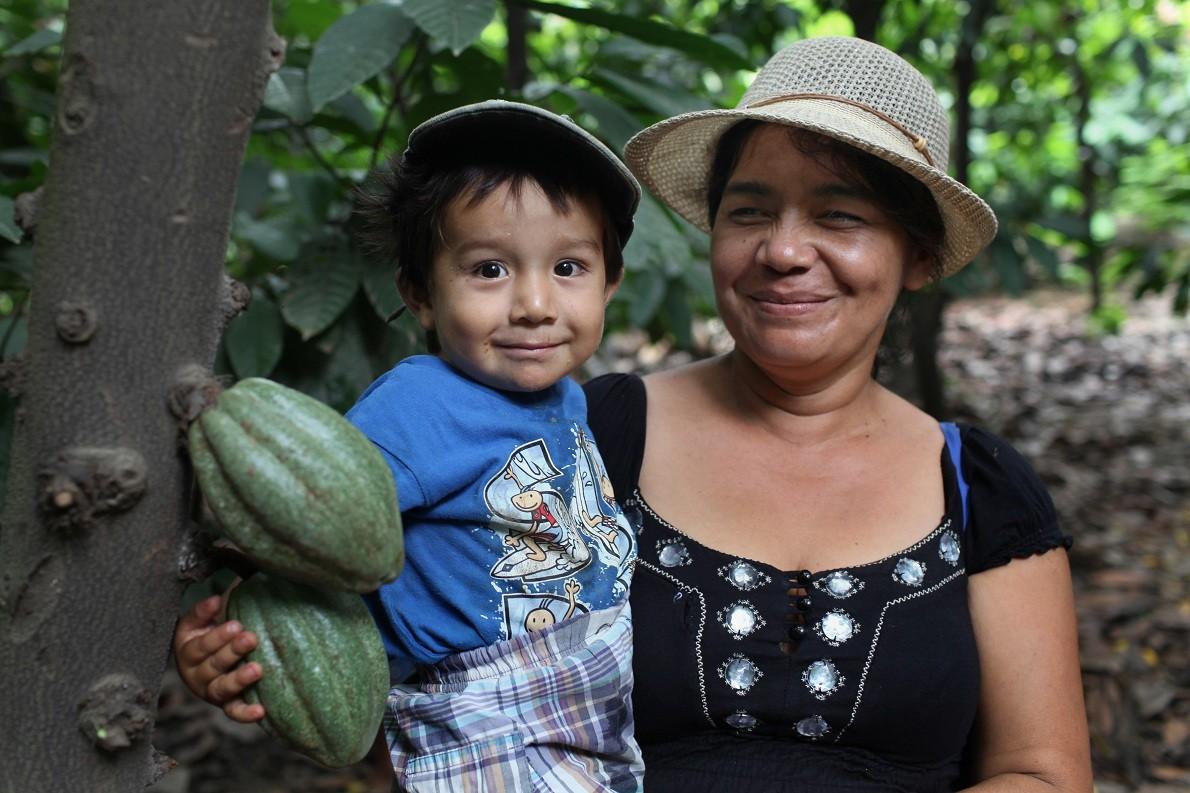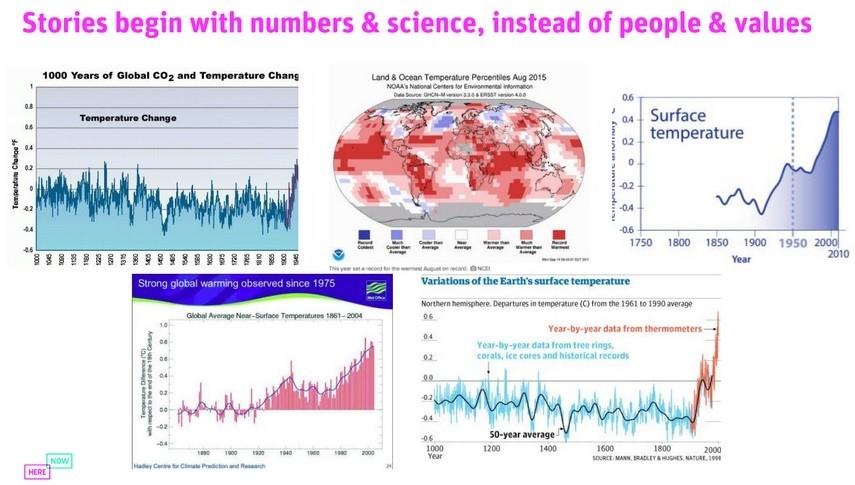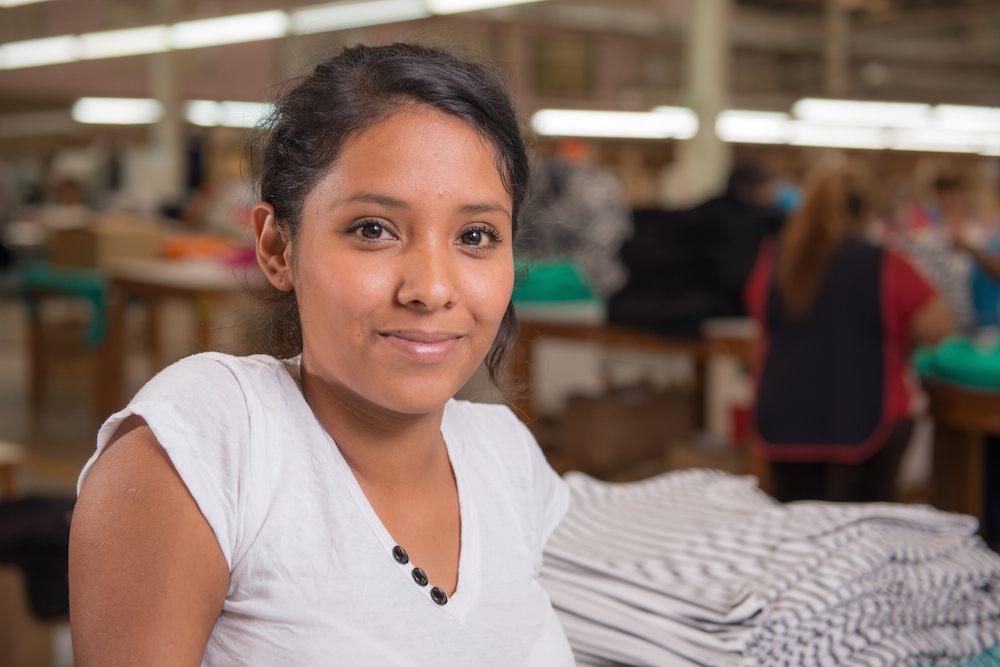Why Leaders Should Place Company Values on the Same Level as Profits


By Luis Gallardo
Carrying the weight of your business, profits and employees’ well-being, not to mention your own conscience, can be back-breaking. To ease the burden, activities that aren’t directly tethered to the bottom line tend to fall by the wayside.
But there are subtle factors shaping your financial success beyond hard numbers. If you zero-in on end results alone, you’ll miss these quiet forces that play a major role in advancing or stalling your company’s progress.
The connection between profits, employee productivity and organizational values is undeniable. When your employees understand how every action ties back to a bigger purpose, they’ll take more pride in their everyday tasks, be more productive and exude an authentic outward appearance. Setting high standards for your organization — and living up to them — will encourage others to support your vision, too.
But writing out a few company creeds won’t get you on track to driving real profits. To incite real change — internally and externally — employees and consumers need to get behind your values.
Give your mission meaning
Consumers are increasingly concerned with what happens behind the scenes. According to a study by Cone Communications and Echo Research Group, 82 percent of U.S. consumers consider corporate social responsibility when deciding which products or services to buy and where to shop.
People want to know that their purchase decisions won’t produce negative externalities, so they’ll often investigate brands to make sure something like buying new shoes won’t inadvertently make life worse for someone across the world. They want to use their money ethically whenever possible, and that means supporting businesses that live up to certain moral standards.
Chipotle did a great job of sticking to its values despite the risk of losing business over a carnitas shortage in January. When the company discovered that a major pork supplier had violated its standards, Chipotle pulled carnitas from the menu until it found a solution. No company wants to disappoint customers on a large scale, but Chipotle used the problem as an opportunity to showcase its values, earning respect and loyalty in the long run.
Bring your values to life
Before your standards can resonate with the outside world, you have to promote them within your company. You can’t expect employees to contribute to overarching goals if they don’t fully understand them or know what the journey should look like. And when your team is united behind a common purpose, it gives them a sense of belonging and bolsters engagement.
In fact, one report found that employees who know their company values are more engaged than those who don’t. Engaged employees generally have better attitudes and are more productive, which directly affects a company’s bottom line.
Revenue and results are linked to employee performance, which ties back to pride and belonging. This ultimately starts with believing in an organization’s value system. To rally your organization around a set of shared beliefs, start with these four steps:
- Define your vision. Spend several months conversing with colleagues and employees and crafting stories that reflect what your organization stands for. Once you have a clear picture, you can start promoting your standards externally. Successful companies such as Lego and Whole Foods Market stand behind concrete organizational values. Every story they share and every action they take ties back to those, which creates an authentic brand experience.
- Lead by example. Actions speak louder than words, and the most powerful influencers on behavior tend to be real-life examples. When you lead by example, you set clear expectations for your organization. To take hold in your company, values should be reflected 80 percent through actions and 20 percent through storytelling.
- Bring in role models. Company leaders should be living examples of the values they preach. But you can also bring in external role models who reflect the values you want employees to demonstrate to further engrain these concepts.
- Recognize and reward desirable behavior. Ultimately, you want employees to model behavior that aligns with your organization’s values. To promote these actions, recognize and reward internal heroes who exemplify your core values at all levels of the organization. Values-based recognition programs provide a confidence boost and make workers considerably less frustrated with accomplishing tasks. People will work harder if they know you appreciate it.
When the market takes a dip or you’re tempted to compromise your core values for the sake of profits, remember to keep the bigger picture in mind. If employees feel you losing sight of the company’s guiding principles, their trust in you as a leader will weaken, and it will be much harder to reestablish your culture.
You may feel like the weight of the world is on your back, but when you have strong company values, they’ll help shoulder the burden and instill a renewed purpose in everything you do.
Image credit: Pixabay
Luis Gallardo is CEO of Thinking Heads Americas, a team specializing in developing and structuring the ideas, values, projects, and contents of the clients it represents. Luis is the former president of brand marketing at Burson-Marsteller for EMEA as well as director of global brand strategy at BAV Consulting. He’s an award-winning author and holds an MBA from IMD in Switzerland and a master’s degree in international relations from the Lancaster University in the U.K.
Alleviating Food Recall Madness: Key Methods to Boost Food Safety Measures


By Darryl Lewis
Every year, nearly 1 in 6 Americans suffer a food-borne illness of some kind. Of those afflicted with a food-borne illness, 128,000 will become hospitalized and 3,000 will die. To combat these numbers and make food safer for Americans, the FDA Food Safety Modernization Act (FSMA) was created by Congress and signed into law by President Barack Obama in January 2011. The goal of the legislation was to create the framework for a preventative system rather than a reactionary system that tries to mitigate the problem as quickly and affordably as possible.
Under this legislation, the FDA has the power to force food companies to issue recalls for a variety of reasons, including known contamination with a pathogen like salmonella and E. coli. This is increasingly becoming important as many Americans report food allergies and sensitivities. It also reduces mislabeling of any kind and manufacturing errors. Past food recalls have cost companies an average of $10 million and are potentially devastating to the organization’s persona.
Another area that FSMA addresses that hasn’t previously been proposed in food safety legislation is the role of foreign suppliers in supply chains. Check your food labels the next time you go to the grocery store. You may be surprised to learn that 15 percent of all food in this country is imported. The food or ingredients produced in other countries may not have the same quality standards that are outlined in ours. Here are some actions that food companies should take to address this vital area, as well as other measures, to increase product safety for their consumers.
Adhere to the Foreign Supplier Verification Program
The FDA requires importers to perform risk-based foreign supplier verification activities, including request for certification, risk assessments, and audits to verify that food or food ingredients manufactured outside of the U.S. are as safe as food manufactured in the U.S.
This will help ensure compliance and transparency across the supply chain. Under this program, additional accountability is placed on the importer to make sure they have the necessary preventative controls in effect. If they are not in place, it is up to the importer to request and enforce compliance in order to avoid penalties and recalls. By following these steps, importers and their respective food companies will enhance product quality.
Collaborate with an international food-safety organization
It is the primary goal of many food safety organizations to protect the welfare of consumers. Therefore, it makes sense for food production companies to work closely with these organizations to create safer products. The Global Food Safety Initiative provides a platform for promoting safer supply chains for organizations and strengthening consumer trust.
Through a rigorous benchmarking process formed by food industry leaders, it establishes the best food safety schemes for companies to follow. These schemes are certified by a third party audit. Participating in this process is a pivotal step food companies looking to maximize their food safety policies.
Invest in a quality management system that ensures supplier quality evaluation
Food quality management software can help boost food safety measures by significantly reducing the risk of food recalls through automation. In addition to automating quality management processes, it increases the visibility of those processes across the supply chain. The software allows for real-time reporting of any adverse effects and has supplier quality features like supplier documents control, supplier risk assessments and audits, supplier onboarding, and supplier scorecards. These tools can help a company find the right supplier and keep everyone on the same page when and if a quality event occurs.
Ultimately, food companies must be able to deliver a safe product to their customers. This has become more complicated as food supply chains have grown. There is more room for error than ever before, which can be scary given the fact that people do die from foodborne illnesses each year.
Therefore, organizations must be able to ensure that all of their partners and suppliers are compliant with the FSMA and other regulations and standards that have been implemented to prevent adverse events from occurring. The aforementioned tips above can go a long way in helping food companies maintain the quality and safety of their products – wherever they come from.
Image credit: Pixabay/kpgolfpro
Darryl Lewis is a digital marketing and a fine/performing arts enthusiast. His concern about social and environmental issues is unwavering, always seeking opportunities to create a positive impact on the people in his community and the world. He holds a Bachelor of Science degree in Business Marketing from Stockton University. Follow him on Twitter @dlew4life
5 Companies Engaging Their Employees Around Sustainability


By Brigg Patten
Sustainability is no longer a buzzword that companies can simply talk about in order to improve their image. Sustainability and corporate social responsibility are standard policies that every successful company must embrace to remain successful and profitable in the 21st century. Successful sustainability programs result in increased savings and profits through tax incentives and the inevitable consumer demand for greener products and services.
Sustainability helps to create a more positive brand and increases a company’s leadership role within the industry. These five companies are well-known for training their employees to care about sustainability -- turning this key engagement point into bottom-line results.
1. Nike
Nike has historically suffered PR problems from its poor production outsourcing decisions. However, Nike has revolutionized how its employees and the public access sustainability data.The sportswear manufacturer created a unique app called Making that helps designers in any industry around the world make better decisions that result in more eco-friendly products. Making is a public sustainability e-learning solution that ranks a company’s product according to energy usage, waste generation and water and soil impact.
Nike is also training its employees to care about sustainability through transparency and global collaboration.
2. Walmart
Walmart is one of the world’s largest retailers. While the company has its own environmental sustainability program, it also trains and educates its supply-chain partners. One problem that Walmart has historically faced is its overseas factories and suppliers using unethical or eco-unfriendly practices. However, Walmart has a very organized supply-chain training program to help achieve sustainable improvements.3. General Mills
General Mills is a multinational food manufacturer that has an excellent sustainability record. Its sustainability mission is focused on protecting both natural resources and local communities.Every year, General Mills offers annual reports about its accomplishments with sustainability and global responsibility. The company's transparent sustainability report details its energy, fuel and water rates. In addition to this, the reports also provide data on General Mills' greenhouse emissions and solid waste generation rates. General Mills trains its employees that sustainability goals can truly only be reached through reducing environmental footprints with transparent metrics.
4. Starbucks
Starbucks has one of the most universally recognizable logos in the world. Since the global coffeehouse chain relies on agricultural products, it proudly states that the planet is its most important business partner.Starbucks teaches its employees about its four main sustainable programs: climate change, recycling and waste reduction, water and energy conservation, and LEED certification for stores. Starbucks makes active efforts to train employees to promote recycling, reusable cups and waste reduction.
5. PepsiCo
PepsiCo may be second place to Coca-Cola in the beverage industry, but it's first place in the field of sustainability. Every year during the annual shareholder meeting, PepsiCo publicly reveals its updated sustainability strategy and goals for the following year.According to PepsiCo, its primary business goals are not just financial performance, but also sustainable growth through discovering innovative ways to minimize the environmental impacts of its operations. The first step in training employees to care about sustainability is for executives and upper management to model ideal attitudes and behaviors.
--
In the end, these five companies are making headlines by investing in employees and the environment. Understandably, employees may be naturally resistant to engaging in sustainable practices because they are busy or worn-out. However, companies can successfully encourage employees to engage in sustainability through offering flexible scheduling for training and the right resources.
Image credit: Pixabay
Electric cars set to become new norm, research finds


Electric vehicles will be the vehicle of choice for motorists by 2026, research among teenagers and learner drivers has revealed.
The findings revealed that that more than eight in 10 (81%) 14 year olds plan to make their first car purchase – in just over a decade from now – an electric one.
Based on the research by the joint industry and government-funded Go Ultra Low campaign, futurologist Dr Ian Pearson has also forecast that electric cars will become the ‘new normal’.
Go Ultra Low quizzed 800 teenagers aged 14-17 and the demand for greener-fuelled cars grew greater the younger that the interviewees became.
The young people polled also revealed that their generation associates electric cars with fewer CO2 emissions (56%), cleaner air (48%), and ‘the types of cars that everyone will be driving one day’ (34%).
Dr Pearson commented: "Young people are very aware of environmental issues and it is great that they also notice that electric cars will be cheaper to run, so it is a clear win-win. Battery technology continues to improve, and the amount of resources needed to make an electric car will continue to fall.
"These technology developments will all add up, greatly reducing the environmental impact of cars while making them safer and cheaper. If current trends towards electric cars continue this means that, by 2026, demand for electric cars will almost certainly outweigh demand for 'traditionally fuelled' cars."
The collaborative campaign is the first of its kind, bringing together a consortium of leading car manufacturers: Audi, BMW, Mitsubishi, Nissan, Renault, Toyota, and Volkswagen, the Society of Motor Manufacturers and Traders and the UK government.
3 Things to Know for Fair Trade Month


This is part of a series on "The Future of Fair Trade," written with the support of Fair Trade USA. A 501 (c) (3) nonprofit organization, Fair Trade USA is the leading third-party certifier of Fair Trade products in the United States. To follow along with the rest of the series, click here.
By Jenna Larson
October is a month full of months … and days. There’s Breast Cancer Awareness Month and Non-GMO Month, with National Kale Day, World Food Day, the International Day of Rural Women and, of course, National Cat Day, sprinkled throughout. There are a lot of things to celebrate in October, and in a way, Fair Trade Month connects them all. October is a month that shows how much people care — about other people, about living beings, about our food and about the planet. This too is the heart of Fair Trade.
Fair Trade Month is a time to spread the word about who and where our products come from. This means putting the spotlight on challenges like child labor in cocoa and slavery in seafood, and also celebrating the farms, factories, brands and retailers that are doing things differently.
As we dive into the second half of October, there are three important things to know about Fair Trade Month:
1. Learning more about Fair Trade is easy
If you’re new to Fair Trade, you might be wondering what it is, how it works and why it matters. In a nutshell, Fair Trade is a certification of social, environmental and economic responsibility. The Fair Trade Certified label on a product means that it was grown (or manufactured) in accordance with strict standards, covering areas like safe working conditions, no child or forced labor, elimination of harmful chemicals, no GMOs and more.
But it’s not just about standards and audits. Fair Trade is a mechanism that allows farmers and workers to be active participants in bringing those standards to life, and in building strong, thriving businesses and communities. Fair Trade producers are democratically organized, and they vote together to determine how best to use their additional income (Fair Trade Premiums) to address their most pressing needs.
“Fair Trade has made a huge difference in my life,” says Ulysma Desiline, a Fair Trade mango grower in Haiti. “Working with a Fair Trade cooperative allows me to support my family.”
There is a ton of information out there about Fair Trade, and BeFair.org is a good place to start. There you can learn more about how Fair Trade works, what products are certified, and how it benefits farmers, the earth and you.
2. Fair Trade products are more accessible than ever
Coffee was the very first Fair Trade Certified product to hit the market when Fair Trade USA opened its doors in 1998. At the time, coffee prices were at a historic low, and many roasters were turning to Fair Trade as a way to help producers earn a stable income in the face of intense market volatility. It was about building an equitable system of trade, and ensuring that farmers could stay in business to keep producing coffee for their international buyers.
Oddly enough, coffee farmers are still fighting that same battle today. The cost of production continues to rise (as do mounting challenges like climate change), but prices have stayed incredibly low. This is why Fair Trade coffee remains as important as ever.
While coffee is still the leader in Fair Trade (over 1 billion pounds certified since 1998), many (30+) new Fair Trade categories have emerged over the years. You can find Fair Trade in nearly every aisle of the supermarket, and can live a truly Fair Trade lifestyle with the introduction of new apparel and home goods products.
You can find Fair Trade fruit, vegetables, flowers, sugar, cocoa, tea, coffee, spices, grains, sports balls, apparel, home decor, coconut (and coconut water), seafood and many other products from over 1,000 different companies. Whole Foods Market remains the leading retailer in Fair Trade offerings, while well-loved brands like Patagonia, West Elm, Naked Juice, Kashi and others begin to embrace Fair Trade.
3. Fair Trade Month doesn’t end in October
Well, technically it does, but the great part about Fair Trade Month is that it gives you the tools needed to bring Fair Trade into your daily life beyond October.
Regardless of what month it is, Fair Trade invites us to ask questions about our products, and to think about where (and who) they came from. It encourages us to be more conscious about the votes we cast with our dollars, every time we shop. In many ways, Fair Trade helps us be a little more human, and a little more aware of the world we want to leave behind for the generations to follow.
Happy Fair Trade Month, and don’t forget to Be Fair.
Images courtesy of Fair Trade USA
Jenna Larson is the Communications Manager at Fair Trade USA.
How to Rock the Pants Off Social Media for Climate Change


Editor’s Note: This post is part of TriplePundit’s ongoing coverage of SXSW Eco 2015. You can read all of our coverage here.
Sustainability has an image problem. It’s big, scary and boring. People feel powerless and disconnected. Most stories about the environment deal with facts, figures and scientific terminology. It all feels a little bit over people’s heads. They feel a little lost. Instead of dealing with numbers and science, we need to tell stories about people and values.
We talk about melting ice caps and drowning polar bears, but people are missing from the conversation. To add to the confusion, we don’t really know what we’re supposed to do about it. We’re told to recycle, use less electricity and carry our groceries in reusable bags. But taking these actions isn’t enough to counteract the large-scale environmental damage being done. Also, they’re boring. All of this makes the topic of sustainability uncomfortable, and we feel guilty about it so we avoid it.
What’s missing from the conversation is why sustainability is relevant to people and their values. We’re not doing a good job connecting them to the issues personally. It’s a hard job. Connecting with solar panels and wind turbines doesn’t come naturally.
When we don’t meet people on their terms and talk about what is important to them, we make it too easy for people to dismiss climate change. One survey showed that only a third of people remembered having a conversation about climate change. And more than 65 percent of people said they have only discussed the topic with close friends or family. What can we do to make this a more popular topic of conversation?
This was all part of a discussion at the SXSW Eco session on meme’ifying climate change. The talk was led by Sarah Stern and Iris Andrews from Here Now and Jessica Lauretti and Hannah Kreiswirth from Purpose. Here's what they said we can do to create rockin’ social media campaigns.
1. Better understand the steps that lead to people sharing
The content you want people to share must have high social currency. In other words, people share what makes them look good. Think about the ice bucket challenge. People tagged their friends, and you looked bad if you didn’t do it. If you did the challenge, you also aligned yourself with all the cool celebrities who were doing it. It made you look good. That’s high social media currency.
People also share content that impact them emotionally. If something makes you laugh really hard, shocks you or breaks your heart, you’re likely to share it. Life hacks and how to do stuff also make for popular content. We share content that we think might be useful to our friends.
Most of all, we share what is popular. If the people in our community do something, especially people we respect, we feel pressure to imitate them. Take the Celebrate Pride Facebook profile filter, for example.
2. Entertain people first to make a message memorable
This is true for all marketing. Put entertainment first, and watch your post grow wings and take off. For example, the metro in Australia wanted to inform people about rail safety and created a video about Dumb Ways to Die. It has over 113 million YouTube views and innumerable parodies have been made of it.
Solar FREAKIN’ Roadways found a hilarious way to market solar roads, a topic that could have been a bust if it had been framed as a geeky presentation with stats. Luckily for the company, its marketing team got their freak on and made a YouTube video that received over 20 million views, proving once again that people share eco-friendly content when they think it’s funny or awe inspiring. Making it funny is a good entry point for people who are drawn to the humor and not necessarily the social impact. Humor is also a great way to get people to remember your message.
3. Leverage unexpected, authentic messengers to depoliticize the message
Enough already with the old white men with lots of money telling people to care about the environment. The majority of people to whom this issue matters don’t look like this. So who should our messengers be? Try to get diverse influencers who already have a large following. Integrate yourself into every aspect of a person’s life. Look for different ways to connect with people with various levels of eco interest. And definitely partner with a community that already exists rather than start a new one; it’s much faster.
Enlist the YouTube famous Smosh Brothers. Or a popular dog. When Purpose and Here Now created a #ClimateChangeIsReal campaign, they partnered with Marnie, a Shih Tzu. The dog has 1.8 million followers on Instagram, 109,000 Twitter followers and almost 400,000 Facebook fans. When you look to messengers besides people like Al Gore, it helps depoliticize your message. It also helps people connect your message with people or communities they already care about. It makes your message relatable and memorable.
4. Respond to what’s current
Greenpeace played off the Lego video to create a campaign asking Lego to end its partnership with Shell. The organization's highly creative parody of Lego’s movie received almost 7.5 million views on YouTube alone. A link below the video prompted users to sign a petition. And it worked! Lego announced it would not renew its contract with Shell.
You can engage fan groups of "Game of Thrones" or "Harry Potter" or any pop culture icon, by adding those elements into your message. People who share those posts on social media might never put a save the world petition on their Facebook wall, but they will post a creative and intriguing video about Lego people drowning in oil. Using pop culture in your messaging is a entryway for people to care about the environment. Think of it as a potential gateway drug: When your message is playful and human, it opens people up to discuss the topic.
Once we nail down how we frame our messaging, social impact is going to seem fun, relevant and exciting. It will be popular and there will be serious social pressure to join the eco conscious lifestyle upgrade. People will want to help make the world a better place.
Image credits: Purpose and Here Now, used with permission
New Unicef-Target-Disney Product to Catalyze Gen Z


Unicef and Target, in collaboration with Disney, are launching a Fitbit-like wearable device for kids that has the potential to be this holiday season’s hottest gift.
If it does become the gift sales winner for 2015, it will not be because it promotes exercise. It will be a sales success because it is a cool wearable with Star Wars branding that enables Generation Z (those aged 10 to 16) to make a difference. This new wearable holds the potential to be yet another cool with a purpose marketing best-practice proven to win millennial generation, and now Generation Z, customers!
Unicef Kid Power
Unicef Kid Power is the name of the wearable device that is being marketed as the first “wearable for good.” The device looks like similar wrist-band digital devices that monitor body movement. It connects to an app that then provides data on how much a wearer is moving.It is this device’s marketing that's the real power keg for igniting increased individual actions that can reduce the risk of obesity and diabetes among Generation Z. Children wearing the device will be engaged through games promoted by entertainment and sport stars like Pink and Boston Red Sox slugger David Ortiz.
The device repositions exercise from a health-related task to being cool and winning recognition. It moves their engagement from a petition that exercise is good to the enabling of individual and collaborative fun. This is the marketing model for selling health and sustainability.
There is also a second tier of motivation designed into this device’s human engagement. This second motivational tier is tied to enabling Generation Z to make a difference. Making a difference is a huge theme among Gen Z. Research points to today’s kids seeking action paths for making a difference, with 26 percent already in volunteer roles and 76 percent concerned about humanity’s impact on the planet.
Children who play the games offered through the Unicef Kid Power device will earn points toward funding food packages for children facing hunger. This is a hugely powerful message for Generation Z. They have high affinity for their age group across racial or national divides. Helping one is seen as helping all in their generation.
Star Wars promotion
As if selling a cool-looking wearable device promoted by entertainment and sports stars is not engaging enough, the Disney Co. is promoting a Star Wars-themed wearable tied to its December movie, “The Force Awakens.” The wearable will be available for sale on Target.com in November and in stores by early 2016. The only real question is: How long before parents get to be cool enough to buy a matching wearable?
Marketing genius that sell sustainable and healthy solutions
Here is what we now understand about successfully marketing sustainable and healthier solutions:
- You cannot educate people to change
- You cannot trick or scare them to change
- You have to “wake them up” with bold engagement, like making it fun.
Isn’t that the marketing genius of the Unicef Kid Power device? It is change made fun, engaging and cool. That is how to successfully sell today’s consumers on solutions that promote environmental and human health. That is how you turn a wearable promoting exercise into potentially this holiday season’s hottest gift for Generation Z!
Image credit: Target
Forever 21 Suit Highlights Retail's Unfair Scheduling Practices


Class-action lawsuits often highlight systemic problems. A recent suit by Raalon Kennedy against his former employer, Forever 21, in Los Angeles Superior Court highlights the problem of certain unfair scheduling practices.
The lawsuit contends that Forever 21 required employees to be available for on-call shifts, but didn't compensate them for having to report to work only to be sent home, Think Progress reports.
“In reality, these on-call shifts are no different than regular shifts, and Forever 21 has misclassified them in order to avoid paying reporting time in accordance with applicable [California] law,” Kennedy said.
“These practices prevent [workers] from obtaining employment from another employer because they’re tied up on-call and they’re required to be available,” Richard Bridgford from Bridgford Gleason & Artinian, who filed the lawsuit, told Law360. “Therefore, in the process, they’re prevented from obtaining other employment, and yet they’re not being compensated for the time they’re tied up.”In April, the New York Times reported that the office of New York attorney general, Eric Schneiderman, is investigating 13 retailers over the use of on-call work scheduling which violates the state’s labor laws.
“Our office has received reports that a growing number of employers, particularly in the retail industry, require their hourly workers to work what are sometimes known as on call shifts — that is, requiring their employees to call in to work just a few hours in advance, or the night before, to determine whether the worker needs to appear for work that day or the next,” Schneiderman’s office said in letters sent to Gap, Abercrombie & Fitch, Target, J. Crew, Sears, TJX and seven other retailers, the paper reported.
How to stop unfair employee scheduling practices in retail
Only 17 percent of retail workers surveyed for a report by the Center for Law and Social Policy, Retail Action Project and Women Employed have a set schedule. Most surveyed have erratic and unpredictable schedules subject to practices such as on-call scheduling, which is “becoming a common practice in the industry,” according to Retail Action Project.What can be done to stop unfair practices in retail such as on-call scheduling? The report lays out a number of recommendations, including:
- Enforcement of existing reporting pay laws by state labor standards enforcement agencies.
- Amending state reporting laws to increase damages awards for violations, which would motivate vulnerable workers to take the risk of filing complaints. Reimbursement of legal fees should be included.
- Legislators should work to pass laws, regulations and/or wage orders that require employers to provide reporting pay.
- Legislators should work to pass laws that may secure more stable scheduling practices for workers, including laws governing on-call work.
- The U.S. Department of Labor’s Wage and Hour Division should revisit the “on-call worker” classification in the Federal Labor Standards Act (FLSA) to assess if workers affected by last minute call-in practices should be included in these protections.
- Mobilizing workers and allies to address the most abusive practices at major retailers.
- Fighting wage theft and scheduling discrimination through legal action.
- Advancing city and state legislative solutions for predictable and fair scheduling.
A handful of retailers have decided to end on-call scheduling, including Old Navy, the Gap, Banana Republic, Intermix and Athleta. It’s time for all retailers to end the practice.
Image credit: Flickr/Mike Mozart
Workers’ Wellbeing Can Create a More Sustainable Apparel Industry — and Boost Profits


By Susan Pick
The Rana Plaza collapse was a tragic reminder of the consequences of the fashion industry’s “race to the bottom.” The past decade has seen more garment manufacturing move to countries like Bangladesh and China, where fewer labor standards mean increased margins for businesses, but also the prevalence of child labor, life-threatening working conditions and poverty-level wages.
However, workers' wellbeing doesn't have to be at odds with profitability. In fact, workers enabled with life skills are more productive at work, make fewer mistakes and have lower rates of absenteeism. Moreover, investing in workers' wellbeing unlocks multiple societal benefits and would be a key step toward reversing the garment industry's humanitarian crisis.
Henry Ford was one of the first business leaders who promoted workers’ wellbeing -- for business reasons. Worker absences and turnovers were causing increased costs and delayed production of the Model T and had seriously affected the business’s bottom line. Developing countries that are seeking to regain their manufacturing competitiveness don’t have to join the race to the bottom -- instead, they can apply Ford’s forgotten lesson: Workers’ wellbeing equals productivity.
For example, Mexico, once the top exporter of apparel to the U.S. due to NAFTA, has the opportunity to “claw back” its competitiveness through high-quality textile markets (like medical textiles and protective apparel) which require innovation and a skilled, productive workforce. However, compared to other countries, Mexico works the most hours (2,237 hours per year) and yet, it is the least productive and is No. 1 in absenteeism. In 2014, unplanned absences cost Mexican companies 31.4 percent in productivity losses.
At Yo Quiero Yo Puedo (IMIFAP), we hear many reports from Mexican businesses of the high rotation of personnel, increasing absenteeism, low worker morale, too many mistakes along the production line, and not enough productivity. With more than 415,000 workers employed by Mexico’s textile and apparel manufacturing industries, the industry has a key opportunity to prioritize workers’ wellbeing as a sustainable solution to its productivity woes.
Why wellbeing is the answer
When workers feel well with themselves and with their work, and when they're empowered to become leaders of their own lives, they become motivated to innovate and be creative. If workers are enabled with the knowledge to develop their emotional and cognitive social skills -- whether through a focus on health, education, citizenship or work — they not only experience life benefits, but they also become active contributors to their work environments.For example, when garment workers learn about taking charge of their own health, their reproductive rights or mental health, their personal and work lives both improve. If they have access to education on civic participation or making financial goals, they become equipped with personal agency, teamwork and leadership skills. All of these benefits lead to greater productivity and reduced costs for businesses.
What we’ve seen in the field
A few years ago, Ileana López, head of sustainability at the C&A Foundation in Mexico, contacted me to see if Yo Quiero Yo Puedo would be willing to test its life-skills and personal-agency programs with seamstresses in a dress factory. My response was a whole-hearted “yes,” in part because I have a personal connection to garment manufacturing.When my mother first arrived in Mexico during the Second World War, she was a Jewish refugee from Stuttgart, Germany. She first made a living as a seamstress, fixing clothes for rich women. After a few years, that effort became a dress factory, where my mother directed the design and manufacturing, while my father managed its administration and finances. As kids, my sister and I helped during some afternoons and weekends, making buttons and buckles, or cutting off lose threads and tagging the clothes. As the daughters of seamstresses, we were, at times, shunned at school, subject to a stereotype that says low-wage workers are incompetent, the furthest from being leaders in their own lives.
With the support of the C&A Foundation, Yo Quiero Yo Puedo designed and launched the program: "Yo quiero, yo puedo ... cuidarme y ser productive" (I want to, I can …take care of myself and be productive.”) Fifteen companies have participated to date. Supervisors undergo 40 hours of life skills and knowledge facilitation, and the supervisors in turn replicate the program during 15 minutes a week with their seamstresses. More than 1,200 supervisors and workers have participated.
The program has made a statistically (and humanly) significant difference in work satisfaction and productivity. Participating companies report that satisfaction within the workplace has increased by 37.5 percent, and the number of supervisors who state they have a better personal-work life balance tripled. Absenteeism was reduced by 25 percent, and the number of pieces produced with mistakes was reduced by 60 percent. In less than 1,500 minutes of interaction, factories improved their efficiency and workers found their power.
Workers’ wellbeing catalyzes widespread benefits
The tremendous impact of enabling workers’ wellbeing isn’t just limited to the workplace. When people are empowered to direct their own lives and act as agents of change, they recognize that they have greater rights and more possibilities. Improving workers’ wellbeing is not transactional (e.g., giving people money, gifts, clothes). It’s intrinsic empowerment.Yo Quiero, Yo Puedo participants have gone on to establish community support groups. Women have started community banks, and adolescents have created dating violence awareness programs for their peers. This demonstrates how not just individuals, but also an entire citizenry can become empowered to change lives for the better, if they have access to education and tools that unlock wellbeing.
Image credits: 1) Jaber Al Nahian 2) and 3) Erick Astudillo for Fundación C&A
Susan Pick is an Ashoka Fellow and the founder and president of Yo Quiero Yo Puedo (IMIFAP), whose education, health, citizenship and productivity programs have helped enable more than 20 million individuals in 14 countries to develop their full potential. Pick is also the author of Breaking the Poverty Cycle and a thought leader for Fabric of Change, a challenge that will award more than €100,000 to solutions for building a fair and sustainable apparel industry.
When Will High-Speed Rail Move Forward?


By Emma Bailey
High-speed rail has served to better assist travelers in countries across Europe, Asia and South America for over half a century. Due to various circumstances, however, the technology never got its start in the United States. But that seems destined to change, in light of a recent agreement between XpressWest and China Railway International concerning a new high-speed link between Los Angeles and Las Vegas. At the same time, the state of California is also developing its own high-speed rail infrastructure between Los Angeles and San Francisco.
Yet there's a chance that these projects – and America’s interest in trains overall – will be consigned to oblivion if Elon Musk's Hyperloop concept is actually implemented in reality. Several firms, such as Hyperloop Transportation Technologies and the similarly-named Hyperloop Technologies, are already working hard to bring this “pipe dream” to fruition. If it actually ends up functioning as intended, Hyperloop travel will supersede even the most cost-effective high-speed rail plans.
High-speed and high-performance rail refers to a mode of transport that operates much like traditional train travel but at much higher speeds, often in excess of 100 miles per hour. The renowned Japanese Shinkansen, developed in the '60s, continues as the shining model of such a rail system. Other countries to have put similar infrastructure into operation as well -- France and South Korea perhaps most successfully. But today, China is the worldwide leader in this technology, having now built more miles of high-speed rail than any other country in the world.
Pundits often consider the United States to be too spread out and sparsely populated to make high-speed rail economical. Another reason for its failure to take hold is the widespread availability of cheap airplane and automobile travel. Some consider it a mark of shame that it took China, of all countries, to actually commit serious capital to the development of this technology in America. When we consider the reputation that some Chinese firms have received for their shoddy and unprofessional workmanship, we have to seriously question whether they can be trusted with critical infrastructure projects in the United States.
China Railway International is capitalizing its joint venture with XpressWest by funding it to the tune of $100 million. The company intends to start building the 230 miles of track required in 2016, which seems like an ambitious target, but many of the environmental impact studies and other preparatory filings have already been approved. Even if the companies do begin construction next year, the future of the undertaking is in limbo because the total costs are expected to run somewhere in the neighborhood of $5 billion, making the initial funds allocated to it seem miniscule.
There are no rail services currently operating in the United States with an average speed of 75 miles per hour or greater. Several routes could theoretically be traversed that rapidly, but for a variety of reasons, the trains only operate at a fraction of their top speeds. All Aboard Florida is a project under construction that would move passengers between Orlando, West Palm Beach and Miami at speeds of up to 125 miles per hour. The New Haven-Hartford-Springfield Rail Program is another such effort underway in Connecticut, and other attempts are either being made right now or on the drawing board across the nation.
The Hyperloop could bypass all of these endeavors and render them nugatory. A brainchild of Elon Musk, this mode of transport would seal passengers in compartments that would move inside sealed tubes at more than 500 miles per hour. Plenty of enthusiasts in the tech world foresee Hyperloops costing less to build and operate than high-speed rail lines, while being more convenient to use. Yet there are concerns around ride quality and the potential for catastrophic emergency failure, which lead realists to temper their excitement about this technology.
If either high-performance rail or Hyperloops become mainstream, the environmental benefits would be great. According to Alberta Energy, traditional oil- and gas-powered vehicles emit about 20 pounds of carbon dioxide per gallon of gas. If greater access to rail- or tube-based, high-speed transport could reduce the number of people reliant on cars, trucks, buses and airplanes to travel medium and long distances, the impact on overall carbon emissions would be significant.
Low-speed trains, subway cars, buses, airplanes and even trolley systems are just a few of the archaic and old-school means of public transportation that people use to get around these days. It's about time some people are trying to shake things up a bit in this space whether the innovations come from China or from the fevered imaginings of visionary billionaires. The United States is a 21st-century nation, and we deserve to do better than forms of mass transport designed 50, 100 or even more years ago.
Image credit: Pixabay
Emma Bailey is a freelance writer and blogger from the Midwest. After going to college in Florida she relocated to Chicago, where she now lives with a roommate and two rabbits. She primarily covers entertainment topics and issues pertaining to the environment. Find her on Twitter @Emma_Bailey90